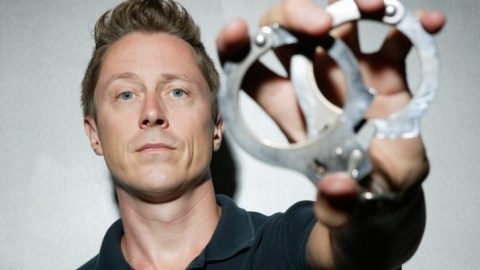Pre-Crime and Punishment

One of the most striking facts about the recent Oslo massacre and bombing by an extremist 32-year-old Norwegian was the sheer amount of pre-meditation that went into the grisly act. The photo of Anders Behring Breivik posing in a wet suit with a high-powered rifle went hand-in-hand with a 1,500-page manifesto called “2083: A European Declaration of Independence.” Both of these were posted online soon before the tragic events. Breivik, too, was known to have espoused virulently nationalistic views. Was there ever a better candidate for pre-crime detection than the deranged Norwegian Anders Behring Breivik? There is somehow an unsettling notion that all of these senseless deaths could have been prevented had all the facts been considered ahead of time.
The whole notion of pre-crime detection, of course, can be traced back to Philip K. Dick’s 1956 science fiction story The Minority Report. In the movie version of the novel, Tom Cruise plays an unfairly accused member of a Pre-Crime Detection Unit, which is technologically capable of spotting crimes before they even occur. As a result, the incidence of violent crimes falls to zero. All of this takes place in a fictional Washington, DC in the year 2054.
What was once the sole domain of science fiction, however, is now blending over into the realm of science fact. There are, indeed, technologically-sophisticated ways that law enforcement agencies in cities such as Washington, DC are attempting to predict the occurrence of future crimes. Earlier this year, the British authorities made headlines for rounding up potential activists ahead of the Royal Wedding, in a series of moves that were described by some as pre-crime detection. And, as ABC News reported last summer, there are already law enforcement authorities along the East Coast who have the ability to predict – statistically, of course – the occurrence of a particular crime by a specific individual.
The whole notion of “pre-crime,” though, brings into sharp focus the basic tenets of democratic society. Are we really willing to exchange notions of “presumed innocent” for “statistically probable to be innocent” or – even worse – “statistically probable to be guilty”? At a time when algorithms and predictive intelligence are able to hazard a guess about our future shopping patterns and the types of people that we would like to meet online, are they really powerful enough to predict who is likely to commit a crime? What are the trade-offs that we, as a society, are willing to make in order to reduce the murder rate to zero? And how do we punish those that we accuse of a pre-crime?
If Dostoevsky were to have written his masterpiece Crime and Punishment in the 21st century, Fyodor Mikhailovich – himself accused of a crime and sent to a firing squad in Siberia – would surely have reversed the plot line of the story. The inspector Porfiry would surely have detected Raskolnikov hours – if not days – before his murder of the old pawnbroker in her St. Petersburg apartment. Instead of Raskolnikov slowly but surely submitting to the guilt and terror of having commited the crime after the fact, he would have surely posted his Nietzschean superman manifesto online — and maybe even tweeted about it — a few hours beforehand. Without a single violent act being committed, the police authorities would have initiated his arrest and put his eventual Siberian exile into motion. But at what cost to the moral fabric of society?





